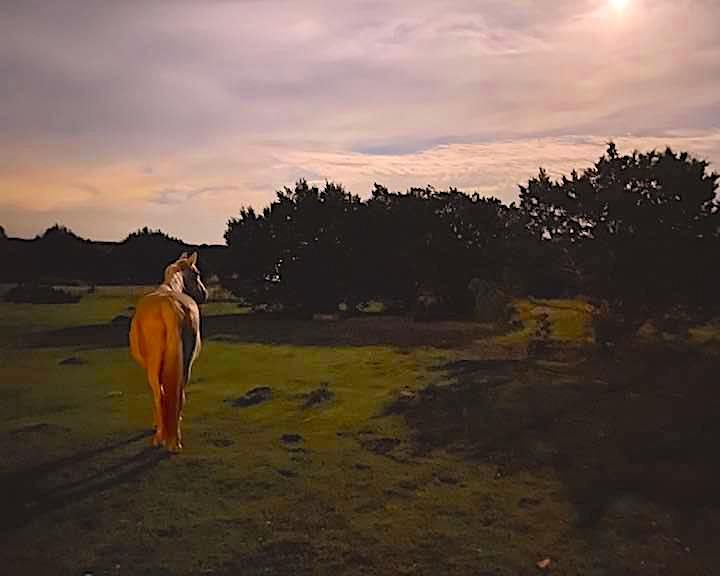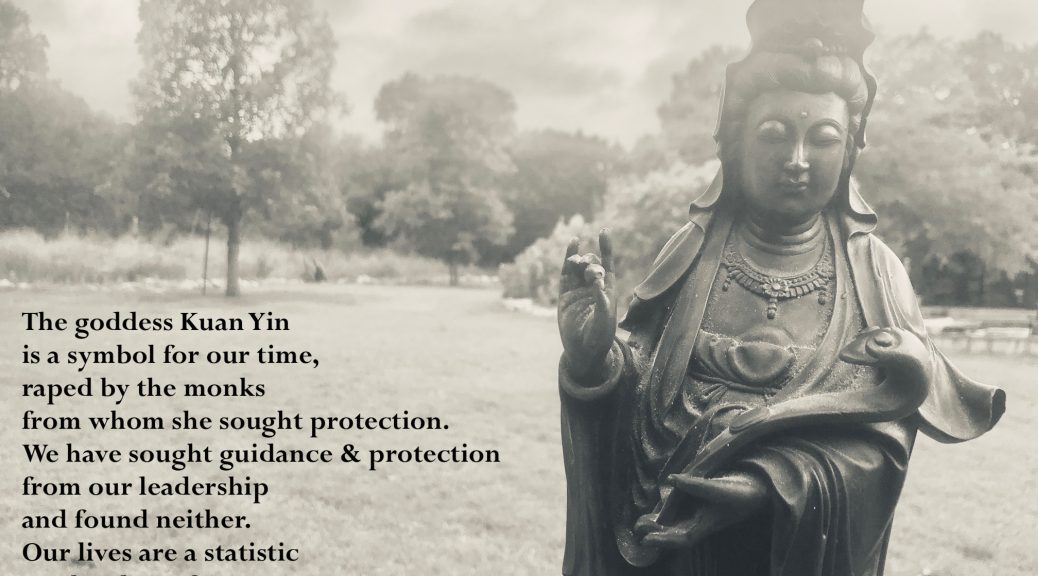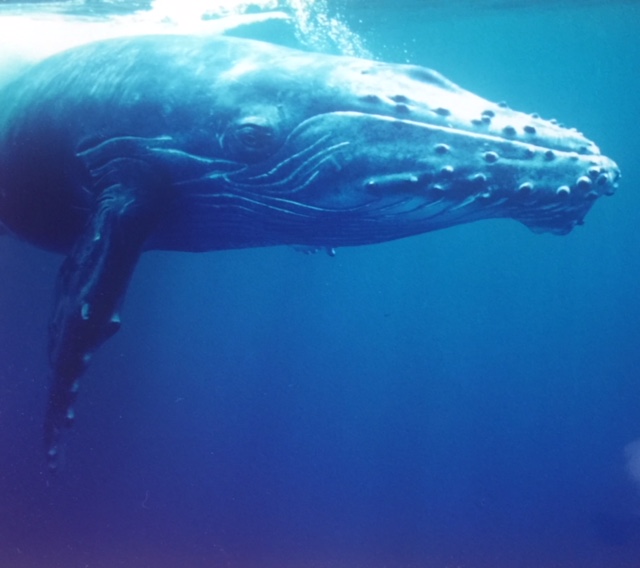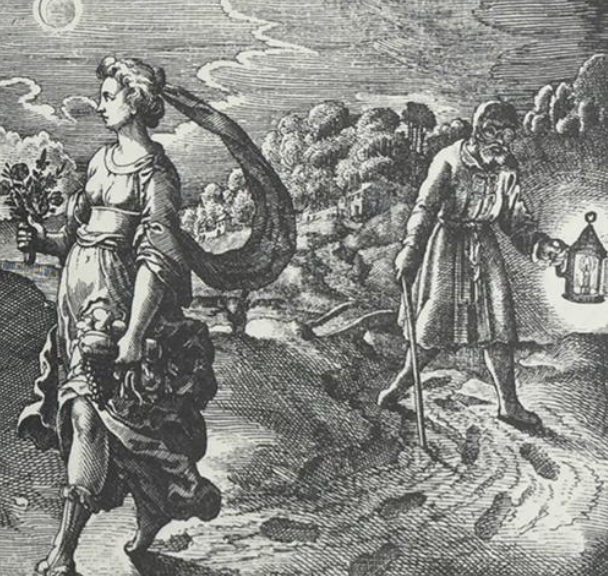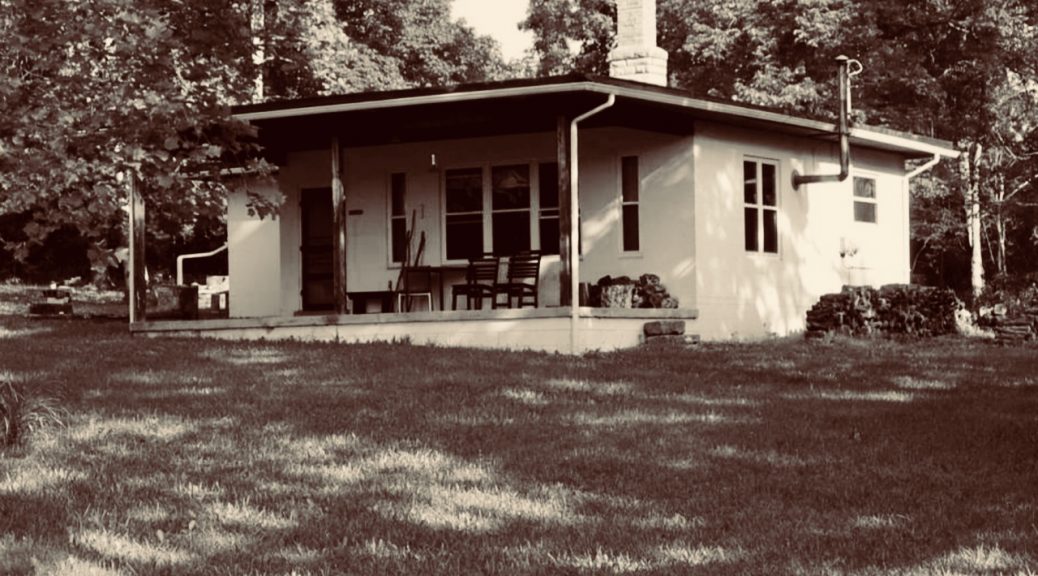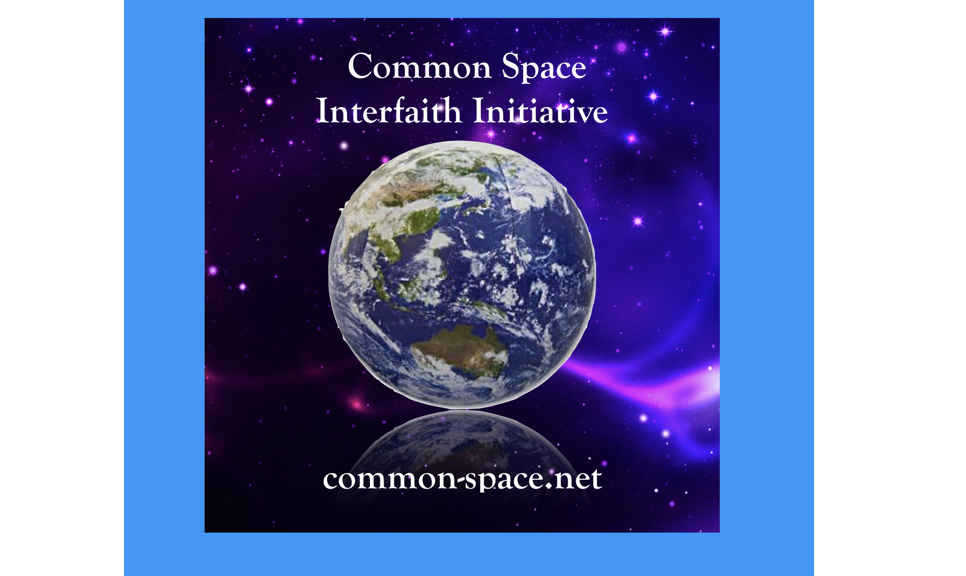Sophia stands, golden,
calf-deep on an empty beach,
feeling the insistent tide.
Brushed by silvered fish,
it may be seaweed, jaja.
Breathing salt.
Crabs have baked
in volcanic tide pools.
Molluscs cling,
urchin tendrils sway
lightly, their march
imperceptible.
They leave soundless depths
to cook on jagged rock,
and all is as should be.
Humming, fizzing white,
incanting, lifting,
circling spiral spheres.
Om aim hreem shreem
sri matre namaha
June 2022
Sorche Berry ©2022
All posts by jacamar_celtic444
Interspiritual Barn Chapel Initiative: Chapels in the Woods (with horses…)
This is a message I put out yesterday to anyone who would listen, asking for nature-oriented lay-monastics with barns/animals/esp. horses to consider offering interspiritual mediation space. For our purposes, “interspiritual” means across faith traditions, including no faith at all. Divisive times call for unity! Let me know what you think…And please share/broadcast if so inclined. I think our planet and our interiorities will thank us.
“As many of you know, as well as being an equine rehab instructor, I am a priest and professed lay-monastic of the Lindisfarne Community. I’m seeking the help of friends to find interspiritual ministers or lay-monastics of any tradition who may be called to offer interspiritual meditation space in a natural setting. Be grateful if you could wrack your brains and send this to the folks that occur to you–you know you know at least one! And thank you!–Sara
#barnchapelinitiative #horsesforpeace #changethemodel
“Are you an interspiritual minister or lay-monastic of any tradition with a barn and horses?
I have a few questions for you:
*Do you find yourself closest to God or Spirit, or simply Being, when in Nature?…
*Do you think these times call for Unity, Oneness, and a radical change in our relationship with Nature?…
*Does it matter to you that our barns and ag land are falling into disuse and our horses are sent to kill pens because we have no jobs for them?…
*Do you know from experience that the horse mind is good for the human mind?…
If you can say “Yes” to one or more of these questions, maybe you can say “Yes” to being part of an Interspiritual Barn Chapel Initiative! Please contact Rev Sara Berry LC at sara@sophiasgrove.org””
Kuan Yin & We the People
The goddess Kuan Yin
is a symbol for our time,
raped by the monks
from whom she sought protection.
We have sought guidance & protection
from our leadership
and found neither.
Our lives are a statistic
on the altar of money.
She is also a reminder
that it will not always be this way.
May 2020
Sorche Berry ©2020
Artwork by Sorche Berry/Sophia’s Grove ©2020
Arise, Saints of Scotland
Arise, Saints of Scotland,
in strath and glen,
kirk, croft, and manse,
and where the rivers meet.
Arise, as the stag watches
at dusk’s end,
fixed by a distant bell.
As shadows fall, wind shudders
the silent thistle, and
Andrew’s flag drifts.
Arise, Fillan, Kentigerna,
Thaney and Mungo,
Ninian, Triudana,
Comgan and Oda.
Nature’s tired weal,
the dank pine grove,
wolf and ox, magpie and puffin,
the whale in the dark sea, wait.
Sorche Berry ©2019
Artwork by Sorche Berry ©2019
the watchman
we are all
alchemists of spirit.
watch your vessel closely
for the ch-ch-ch-changes.
from black to red,
from earth to fire,
talamh à teine
follow sophia,
her winding, fractured path,
for she will
find me, find you.
This is the Work,
and there is always
much to be done
we are ripples on the lake,
condensation, distillation,
solve et resolve,
earth to fire,
talamh à teine
Sorche Berry ©2018
Artwork by Michael Maier ©1618
Emblem XLII, Atalanta fugiens
Contemplation Builds Community
Whatever else we do as living, breathing, walking, talking, sleeping, working members of the human race, we need to take time to share ritual space together. We’re too busy to stop and take a moment to be grateful, too stressed sometimes to stop and ask for help. Most disturbingly, we’re too busy to look over the wall of our own issues and to reach out to fellow human beings, whose issues – read nationality, customs, faith, religion – may be different from ours. Like a line in a Robert Frost poem called “Mending Wall,” we think “good fences make good neighbors.” We’re pretty comfortable with this sentiment. It validates a vaguely held impression that boundaries have their uses and it lets us off the hook of social responsibility.
Of course, some boundaries are useful.They ground us, and they provide a context within which and from which we can operate. But to see the wall and never to extend across it a hand or a smile is just plain wrong. That the two men who share a wall in Frost’s poem have a relationship at all is because they meet across it every year to fix the parts that have tumbled down, through bad weather, or damage by livestock. In fact, this time of connection is so valuable to both men that, as the poem progresses, we begin to suspect one of them may be causing some of the damage, as an excuse for company and communion. Frost’s point seems to be that boundaries are only useful when they provide an opportunity for relationship. And it is relationship that is, well, priceless.
We don’t need excuses to extend a hand; there’s damage everywhere. We’ve all made it.
So let’s share sacred space. Let’s rebuild together and repair together. But how on earth do we do this, when we pray differently, have different religious agenda, customs, and expectations? How do we bridge those kinds of divides? There is one tradition that is common to most faiths – the tradition of contemplative prayer or silent meditation. What better medium to share than silence? Silent contemplative prayer brings us to a place of absolute tranquility: a word-less, ego-less, doctrine-less haven, where we can rest, simply and fearlessly, in the sacred. Sharing silence together – across traditions and across boundaries of faith – sharing silence reaffirms that, while we may stand before gods of a different name, we stand together in our humanity, with all of its faults and all its beauty.
So find a centering prayer or meditation group near you, and try silent prayer on for size. You and your neighbor, and the things that are broken between you, will be glad you did.
Merton’s Cabin
Refuge and sanctuary,
safe in shimmering woods,
my splintered walls
betray a jagged path
between faith worlds
A monk with a child,
Cistercian Buddha,
doubting Thomas, all
patiently thrust in
trust with his nurse
Eternal lines written here,
safe from passing pleasant fools.
Shame I couldn’t save you
from the shock
of vanished faith
Sorche Berry ©2018
Artwork by Sorche Berry ©2018
Sophia’s Call
Sophia’s Call
I have never been unknown.
You have always known me.
I am Sophia of the eighth Archon,
Co-Creatrix of all the Worlds,
Lady of the Spheres,
Mistress of the Void.
If I have not been known,
That has been your choice.
You have placed a dark veil upon me,
Made me silent, forbidden.
But He knew me before Time,
Knew me well,
And He knows it is I who will
Draw down the last veil.
I am in all, your yesterdays and your forevers,
The whore and the queen, the bile and the blood,
Et Spiritus Sancti, your holy, equal third.
While I turn the constellations, I am your breath on a window,
A lost perfume, presence in an empty room,
As close to you, closer, than your faintest pulse.
I am Compassion, never-ever-ending Love.
I am poured out across a lake in sunlight,
I am the womb’s warmth; in wind, mist, moss
In fecund forest earth, a green thought.
I am mountain, ocean, leaf, and stream,
And you have always known this.
I am the swirl of dhikr,
The blessing of water,
The shoke at a wall,
Cantor, muezzin, the glistening choir.
Mother to Moses, Jesus, and Muhammad,
Always One, All in All.
These arms have held you all, and will always hold you.
I have bled with you, bled for you.
I have cried with, laughed with, and will cry again for you, my children.
I am Namu and Nous. Be held within my golden breath, radiant.
Choose to unveil me.
Many will slide or slouch away.
But for you, Soul of the World,
With Amazon stride, I will break Heaven upon you
And splintered you will scatter,
Joyous, One,
To meet the bright Abyss.
Sorche Berry ©2018
Artwork by Agnessa Kesiakova ©2018
Holding Common Space
Common Space Interfaith Initiative’s first interfaith gathering was held at St Scholastica Monastery in Boerne, Texas in 2008. The idea was, and remains to this day, to share contemplative practices between faith traditions, and this particular retreat was a sharing of Christian and Buddhist meditation practices. We had 24 Christians and one Buddhist show up–my co-presentor. We were no doubt asking for that by hosting it at a Christian monastery, go figure!
Times haven’t changed at all in terms of our ability to predict the balance of attendees from different faiths at particular events, although it strikes me that Christians may be the most existentially curious group and perhaps the most open to learning about other traditions. It’s extremely hard to find out what will call some people to want to share space with strangers from different paths, but for me it’s about creating peaceful understanding in a complicated world. As far my role as facilitator goes, I’ve stopped altogether trying to identify individual needs and now just see my role as “one who holds space.”
There seem to be three key ingredients to holding common space between faiths: the first, finding a neutral location; another, the need to co-opt a capable co-presentor from the other traditions; and lastly, the need to present a form of “safe” practice, not one potentially at odds with the belief systems of your colleagues in circle.
Thankfully, Common Space here in San Antonio no longer needs to borrow space from churches and monasteries, although I was extremely grateful for the early help. The neutral ground we have found for ourselves is in a community center which houses different non-profits, a local theater, and some other small businesses. Our meeting rooms are attached to a church, so we have the benefit of access to larger space if we need it, for presentations, visiting speakers, and so on, but the automatic association is not with Christian space. We have our own entrance and there is no religious symbolism to be seen on our route in or out.
Finding the co-presentor who is considered an authority by his or her faith colleagues in circle can be a challenge, and may take some time to finesse. However, once the right person comes your way, you stand a much better chance of gaining group members from that faith. With many potential attendees, the question is one of tradition and having the authority to speak. For instance, in a Sufi environment, Muslim attendees usually want to know the lineage of the prayer leader, to be sure they are properly authorized to lead.
Once the pragmatics of the space have been negotiated, “safe” practice become the key to having people return. The space has to be a place of comfort where attendees do not feel any risk of spiritual dissonance, including the risk of participating in a manner that goes against their belief system. Here, I’ve found the silent meditative practice of Centering Prayer particularly useful: those in circle can choose a sacred word for their practice in keeping with their tradition and we can alternate the texts used to open and close the circle between traditions.
There is so much more to say here, but I’ll follow up on these themes in later posts. Suffice to say that it is an honor to hold space between faiths, to provide that fertile liminal ground where peaceful miracles can happen. This liminal space between, however, is a fragile, delicate thing that needs to be nurtured like a wild rose: the petals can fall very fast without proper care.
Notes from the Audience: Dawkins vs. Williams (Feb 2012)
(Note: I wrote this back in March 2012. Sharing to save…)
DAWKINS VS. WILLIAMS: A PUT UP JOB? OR MORE COMMON GROUND THAN WE THOUGHT?
On 23 February 2012, I attended the debate at Oxford’s Sheldonian Theatre between the Archbishop of Canterbury and the Arch-New Atheist, Richard Dawkins. The topic up for discussion was the “The Nature of Human Beings and the question of their Ultimate Origin.” Fifty tickets were made available to non-Oxford students and I made it up at 3am in Texas on the only day of online sale to get my two.
The rise and rise of atheist public commentary, spearheaded by Dawkins and the Richard Dawkins Foundation for Reason and Science, marks a sea change in British cultural and intellectual thought. Dawkins is giving name and form to decades of British religious apathy and disinterest, discretely veiled all the while in positively British good manners, and a broad appreciation for religion’s role in providing social order and its work for charitable causes. The elephant in the room for so many for so long, however, has been quiet discomfort with the notion of a creator god. Dawkins is fed up what he sees as this distracting and irrational notion, along with the obfuscations he thinks creationists bring into education, and is resoundingly prepared to say so. But ever since reading a hatchet job by Martin Seymour-Smith’s on the “the archdunce Dawkins,” I have been intrigued by the level of animosity engendered by this apparently reasonable, and obviously intelligent man.
Much has been said in the press since the debate about Dawkins’ apparent concession to agnosticism in his statement that he is “6.9 out of seven” certain of the absence of God but that “the probability of a supernatural creator existing is very, very low.” This statement has gained remarkable traction, and most especially in the copy of media hacks who were not present to hear it. I hazard that few in the Sheldonian audience were in any doubt that Dawkins’ concession of 0.1 point out of seven to the possible existence of a god was anything other than a logical acknowledgement of that which cannot be proved. What is surprising, however, about this commentary from these absent parties is not only the puerility of the reaction, but the intellectual laziness of the commentators who speak inadequately, if at all, to the rhetorical context of the debate. One of the reasons Tim Stanley (a historian) of the Daily Telegraph goes to church, apparently, is that is that he doesn’t want “to run the risk of spending eternity in Hell with Richard Dawkins.” Funny, but basically, cheap schtick at the cost of any useful insight, historical or otherwise – and good luck to his fellow parishioners, by the way. Al Webb, in the Huffington Post, describes Dawkins as “the controversial Oxford University professor billed by many as the world’s “most famous atheist” (who) now says he is not 100 percent sure that God doesn’t exist — but just barely.” Barely stifling a laugh himself, Webb then goes on to recount “the amusement of the Archbishop and others” at Dawkins’ dialectical naïveté.
The feeling that Dawkins is not taken seriously was so palpable during the Sheldonian debate that it skewed from the outset a potentially fruitful discussion. Another source of cognitive dissonance for the audience was the shifting contextual basis for this meeting which seemed to lead to divergent approaches by the speakers. The meeting itself was publicized and ticketed as a “conversation” between Dawkins and Williams; however, almost all the subsequent publicity promoted the meeting as a debate. Sometimes the audience seemed to be genuinely uncomfortable when Dawkins appeared to be thinking aloud, rather than offering a formal strategic response to a question. At other times, the same audience could be heard to shuffle and snicker when Dawkins appeared – and in fact claimed openly — to misunderstand a the term “epistemic”; very certain ground for the philosopher Kenny and, doubtless, for Williams, but not usually part of Dawkin’s working register as a scientist. There certainly was a good deal of snickering going on, usually garnered by a comment by Dawkins, both on the part of those with whom he shared the stage–the moderator, the philosopher, Sir Antony Kenny, and the Archbishop, who referred to the former as “Tony”—and on the part of the audience.
Dawkins held closely to a conversational style throughout, but it seems clear that his approach wrong-footed his audience, who were expecting the more familiar cut-and-thrust of formal debate. Rowan Williams, however, was to play it both ways. He joined in with the advertised conversational character of the event, but also employed rhetorical strategies associated with the debate form, including his frequent questioning of Dawkins, which came across both as a strategic deflection of attention onto his opposition and as a play for time. His use of self-deprecating wit was a crowd-pleaser, as was his cloaking of a critical retorts with the phrase “I find this very interesting.” Indeed, Williams was the more engaging speaker and, I suspect, the better-prepared debater. Could it be that Richard Dawkins was himself wrong-footed by the Archbishop on contextual grounds? Or did he just not fully appreciate his rhetorical situation? He was certainly too busy trying to deal with Williams’ many questions to be able to mount anything that resembled a considered offensive. The terms offense, defense, antagonist, opposition—all seemed to have fallen away from Dawkins’ rules of engagement manual for the duration of the meeting. Also, and I leave this as an aside because I know nothing of the relationship between Kenny and Williams, it was clear from the benches that the moderator’s allegiance was to Williams. I say this for a number of reasons, but primarily for the time Kenny allocated to personally questioning Dawkins, where at once, unfitting for one supposed to be moderate, he seemed to be doing much of the Archbishop’s work for him. None of this is to say that Dawkins needs an apologist in the realm of public debate; he has amply demonstrated his abilities as a speaker, writer, and thinker. The overriding impression I came away with, however, was that Kenny and the Archbishop had been let in on the joke, whatever it was, and that Dawkins had not. It was also disappointing that, while Kenny and Williams stood shoulder to shoulder as philosophers during the first three sections of the debate, the Archbishop only truly emerged as a theologian in the last component, “On the Origin of the Universe.”
I listened closely for areas of common ground between Williams and Dawkins, and found some, such as a general acceptance of evolutionary theory (just a difference as to who’s in charge of it), and a general appreciation for the remarkable complexities of nature revealed by science. It would have been fruitful to explore more of these points of convergence. Although it would be naïve to suggest that either side of the debate would necessarily want to find common ground as such, it may be that somewhere between the Faith/Reason polarities is our next evolutionary step. The Christian humanist position (sometimes called Yeshuan Humanism)–where a rational humanist position is allied with a Christian moral framework shorn of the supernatural—seems a feasible melding of the Dawkins/Williams strands, and could be useful to the rational progress of religious form. There is already a quiet coexistence of Christian believers with atheists in British and American Christian circles, amongst both clerical and lay communities (see On Faith, the Newsweek/Washington Post website on religion, http://newsweek.washingtonpost.com/onfaith//2010/03/disbelief_in_the_pulpit/all.html). It may be time to acknowledge these differences, express them, and find ways to move forward, together. The practice of “interfaith dialogue” is could assist here: both positions, one of faith and one of no faith, require a leap beyond what is known, and are positions founded on belief. Back we come to the 0.1 point out of seven. Identifying a convergent stance in his book, Between the Monster and the Saint, Richard Holloway describes the After-Religionist, one who views God as a mythological construct and religion as possibly the greatest human work of art we have. Respect and appreciation for religious forms combine here with science, reason, and the acknowledgement of the importance of the teachings of the man, Jesus Christ.
Dawkins, then, far from being a dunce, is not alone in thinking that somewhere in the convergence of humanism and faith, lies the beginning of the rise of our species to its full, autonomous height, encouraged so assiduously by Dawkins’ fellow Horseman, Christopher Hitchens; the arrival at a point in human history when we finally may utter a resounding “yes!” to the unmiraged view of humanity and its place within the natural order. And, with any luck, we can get enough of a move on for this to happen some time before we are all dusted by Andromeda. I leave you with one last foray by Dawkins into this common territory in potentia which reads thus: “perhaps the oxymoronic impact of “Atheists for Jesus” might just be what is needed to kick start the meme of super niceness in a post-Christian society. If we play our cards right–could we lead society away from the nether regions of its Darwinian origins into kinder and more compassionate uplands of post-singularity enlightenment?” (”Atheists for Jesus,” 2004). To borrow from the language of evolution, I think this one has legs.


